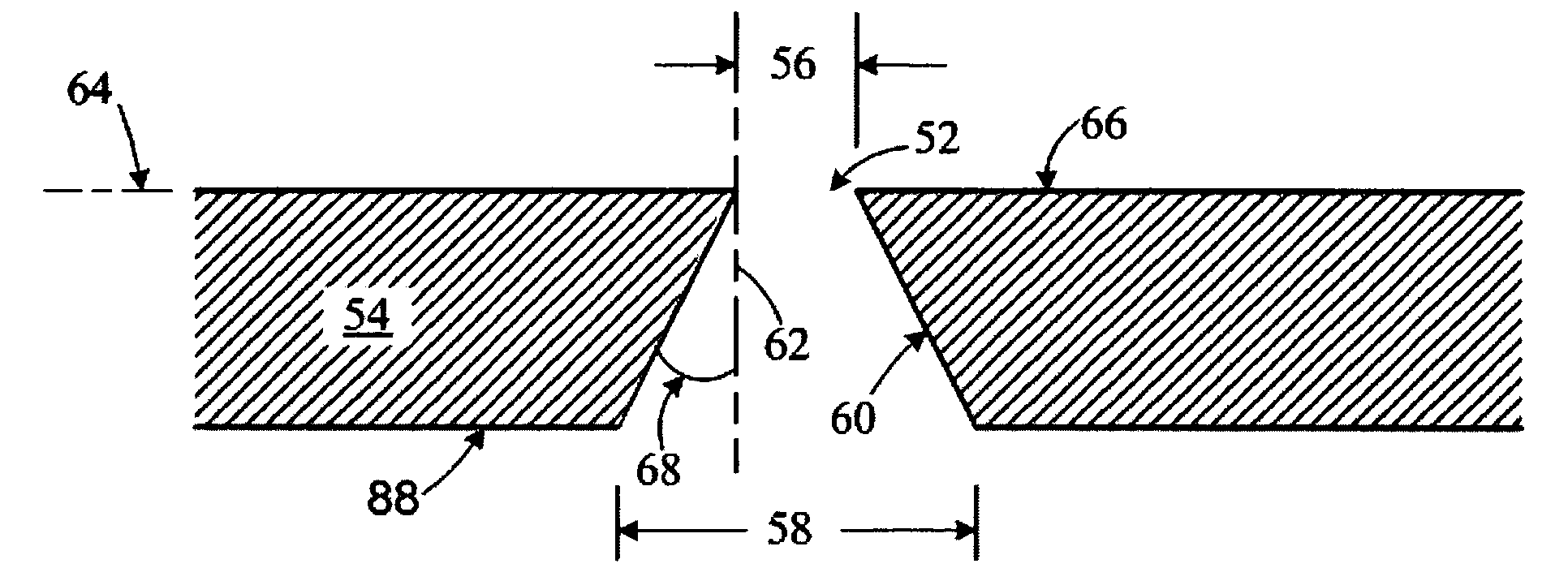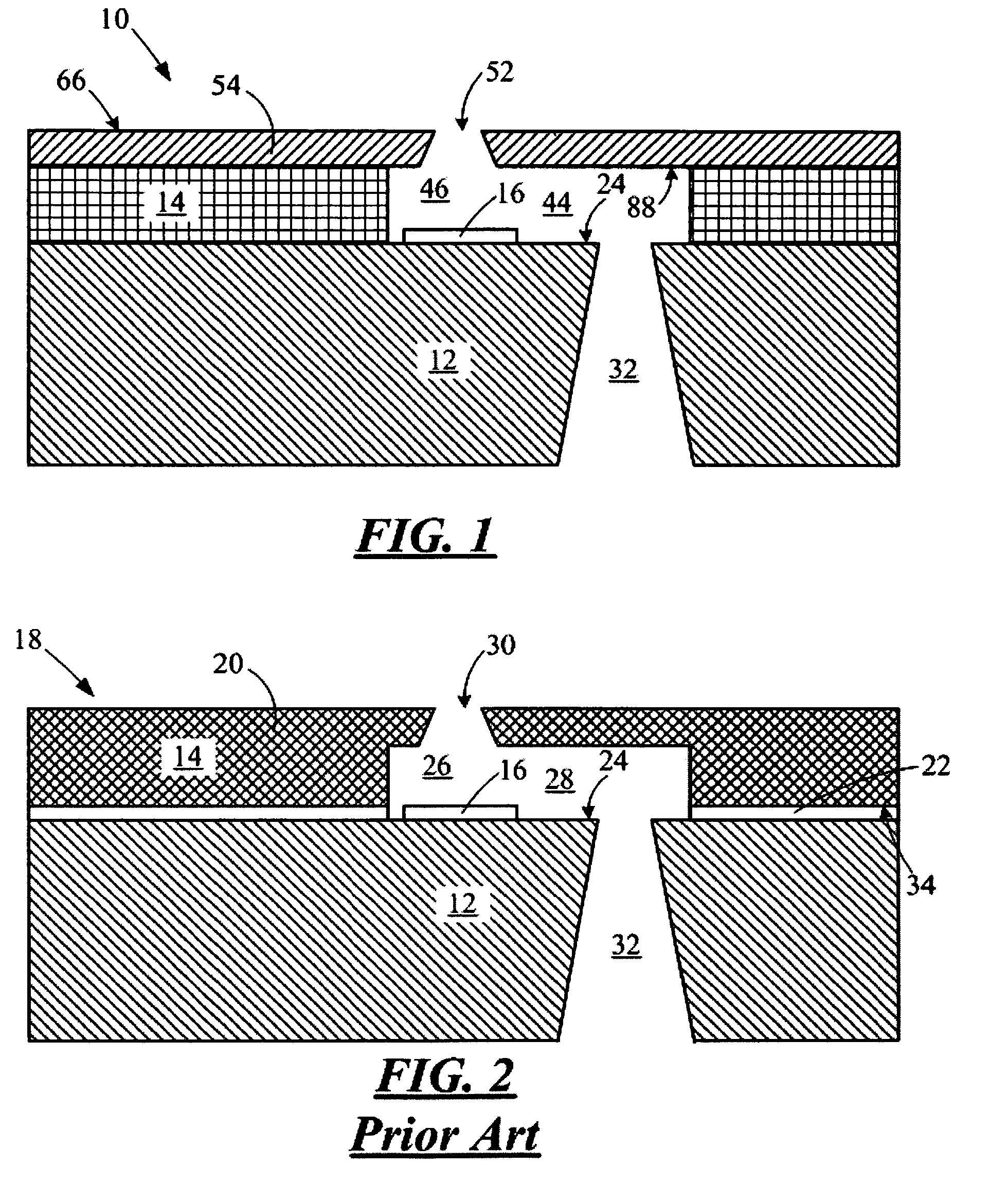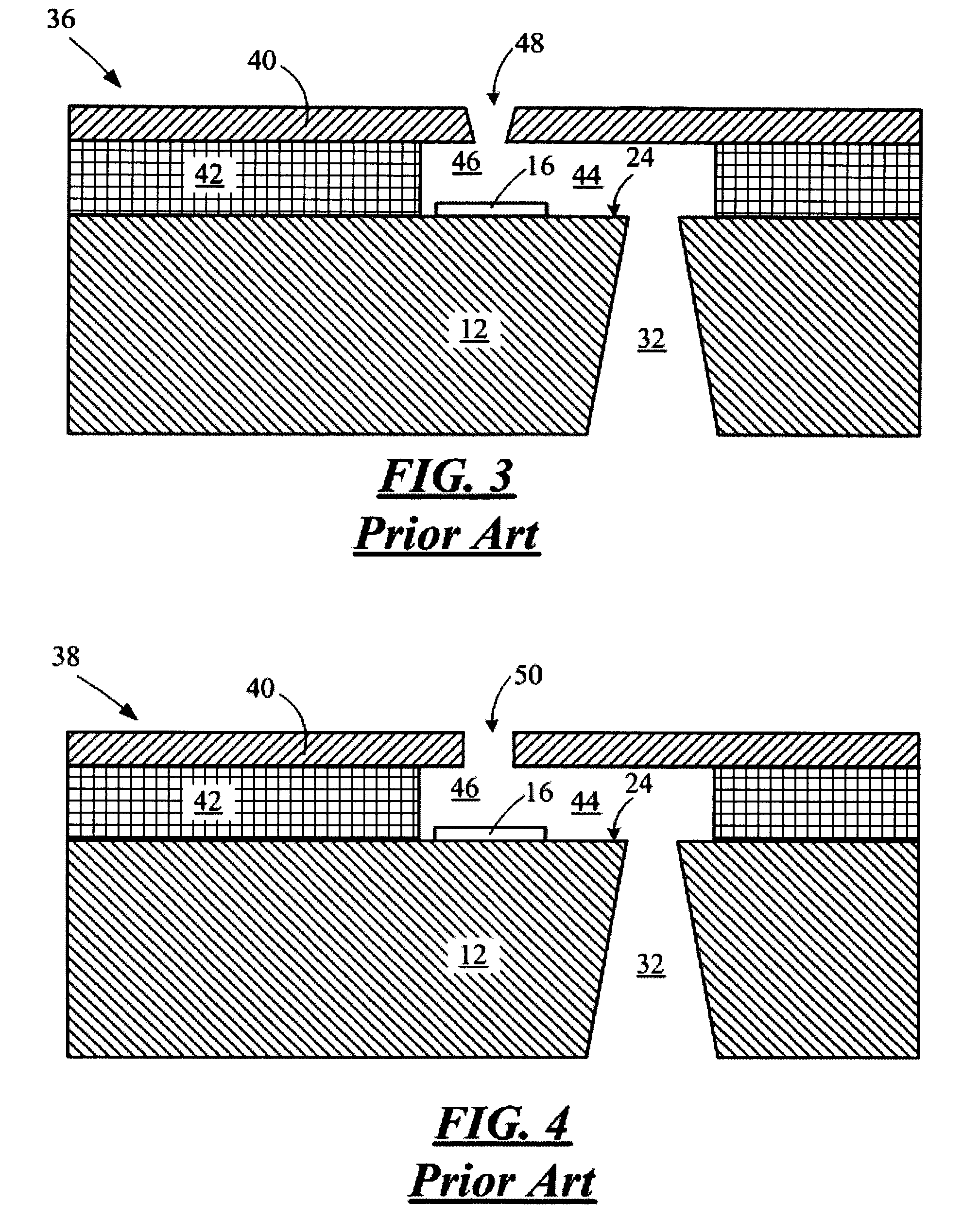Nozzle members, compositions and methods for micro-fluid ejection heads
a technology of nozzle members and nozzles, which is applied in the direction of magnetic recording, data recording, instruments, etc., can solve the problems of high manufacturing cost inability to provide suitable reentrant nozzles in conventional photoimaging and development techniques, and inability to meet the needs of microfluid ejection heads, etc., to achieve improved speed and quality, improve the effect of speed and quality
- Summary
- Abstract
- Description
- Claims
- Application Information
AI Technical Summary
Benefits of technology
Problems solved by technology
Method used
Image
Examples
Embodiment Construction
[0024]With reference to FIG. 1, there is shown, in partial cross-sectional view, a portion of a micro-fluid ejection head 10. The micro-fluid ejection head 10 includes a thick film layer 14 attached to a substrate, such as semiconductor substrate 12 having various insulative, conductive, resistive, and passivating layers providing a fluid ejector actuator 16.
[0025]FIG. 2 depicts a prior art micro-fluid ejection head 18, wherein a nozzle member, such as nozzle plate 20, is attached as by an adhesive 22 to a device surface 24 of the semiconductor substrate 12. In such a micro-fluid ejection head 18, the nozzle plate 20 is made out of a laser ablated material such as polyimide. The polyimide material is laser ablated to provide a fluid chamber 26 in fluid flow communication with a fluid supply channel 28. Upon activation of the ejector actuator 16, fluid is expelled through a nozzle 30 that is also laser ablated in the polyimide material of the nozzle plate 20. The fluid chamber 26 and...
PUM
 Login to View More
Login to View More Abstract
Description
Claims
Application Information
 Login to View More
Login to View More - R&D
- Intellectual Property
- Life Sciences
- Materials
- Tech Scout
- Unparalleled Data Quality
- Higher Quality Content
- 60% Fewer Hallucinations
Browse by: Latest US Patents, China's latest patents, Technical Efficacy Thesaurus, Application Domain, Technology Topic, Popular Technical Reports.
© 2025 PatSnap. All rights reserved.Legal|Privacy policy|Modern Slavery Act Transparency Statement|Sitemap|About US| Contact US: help@patsnap.com



